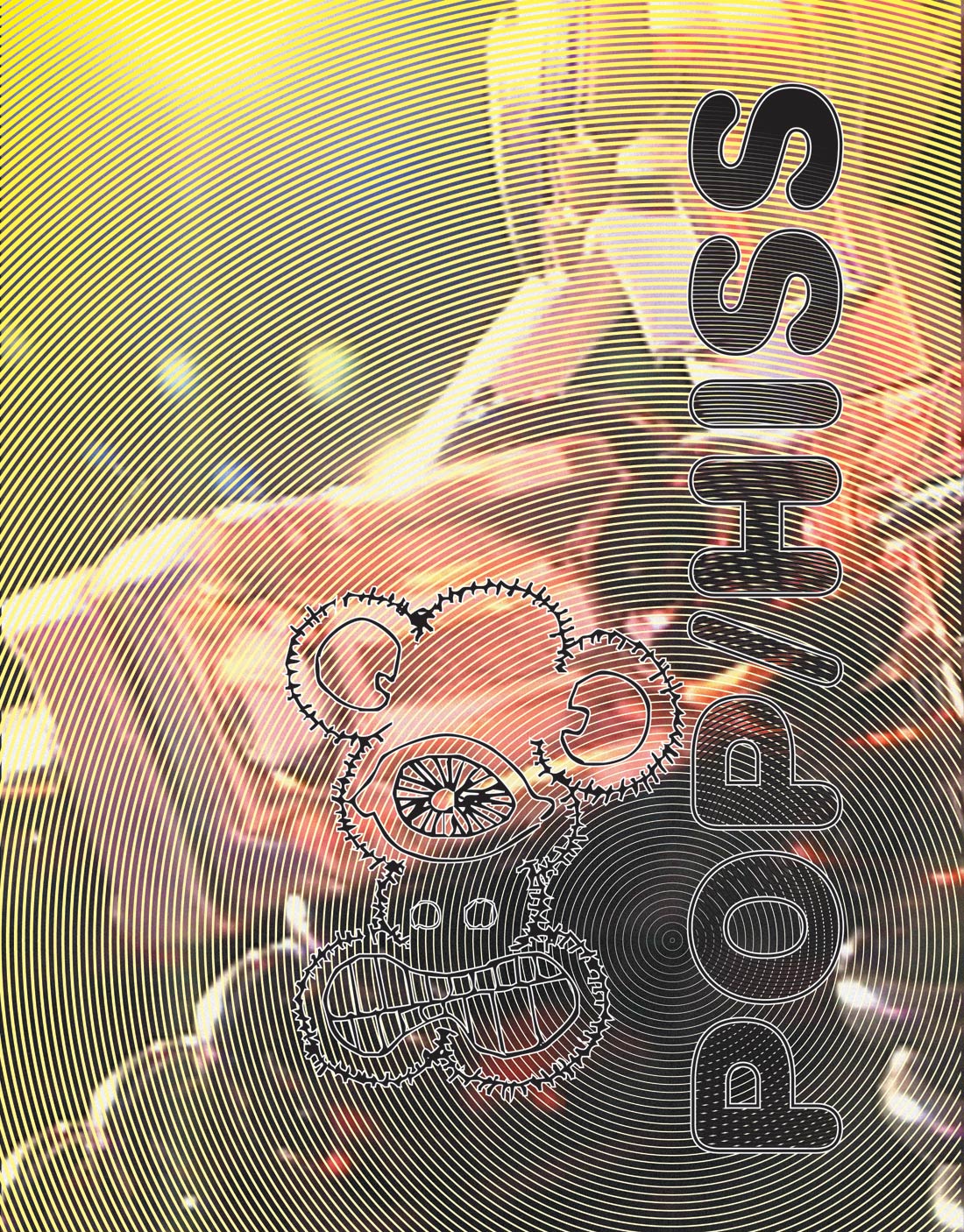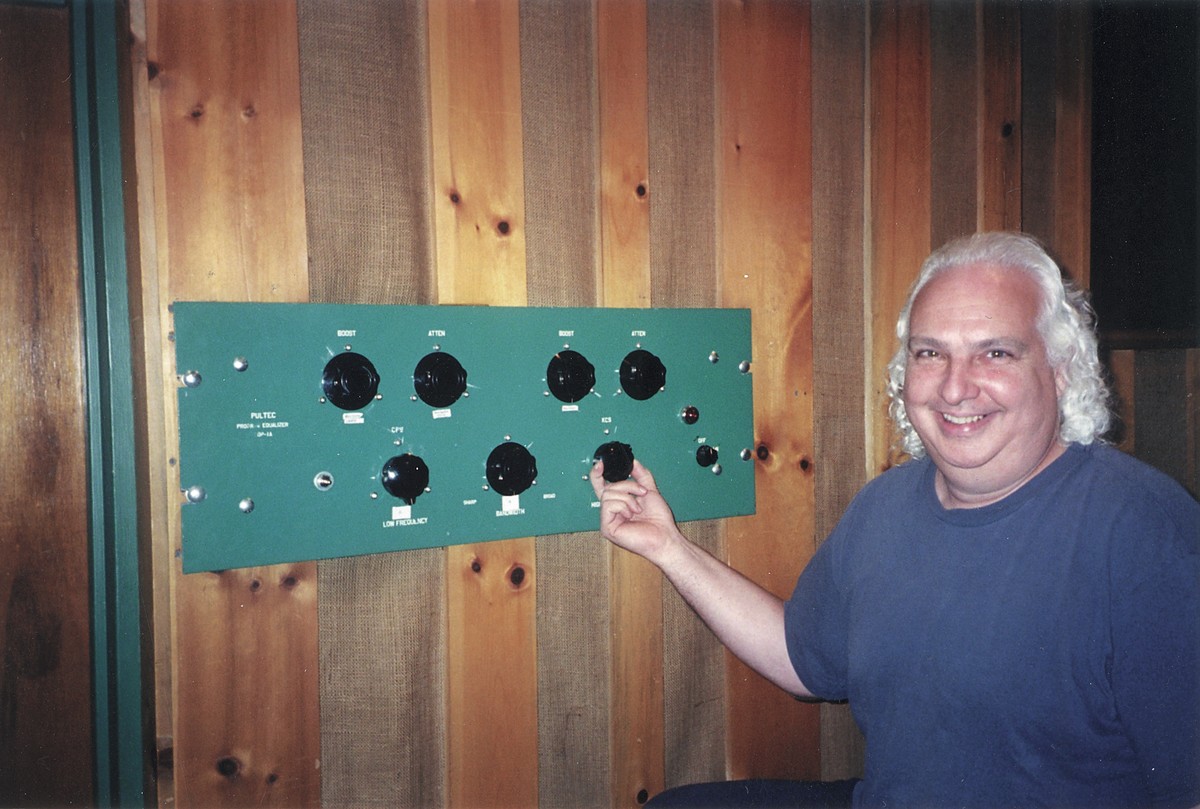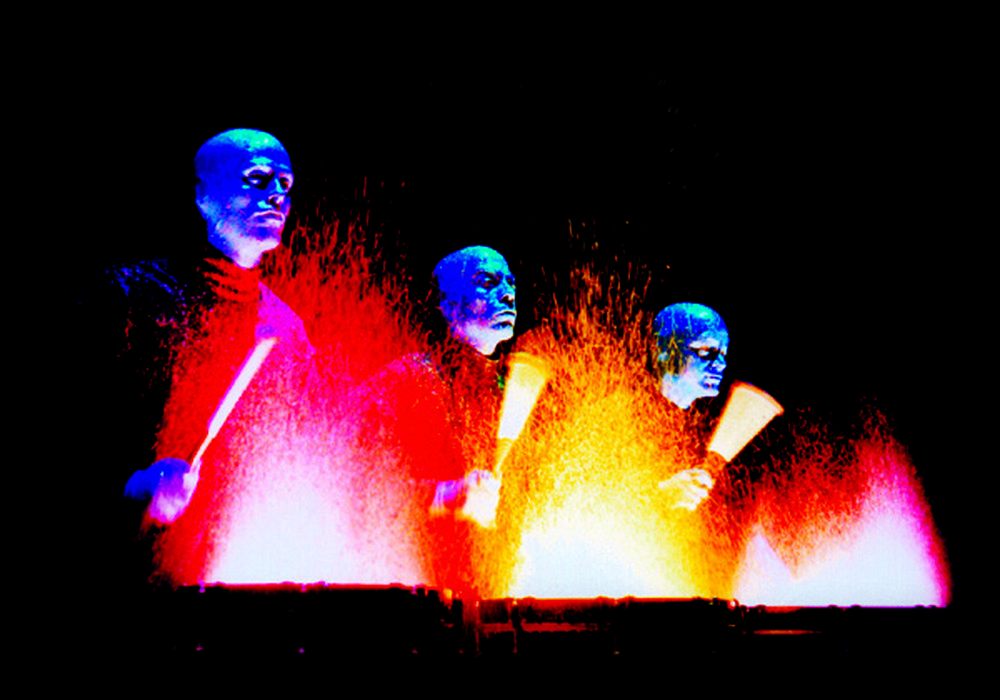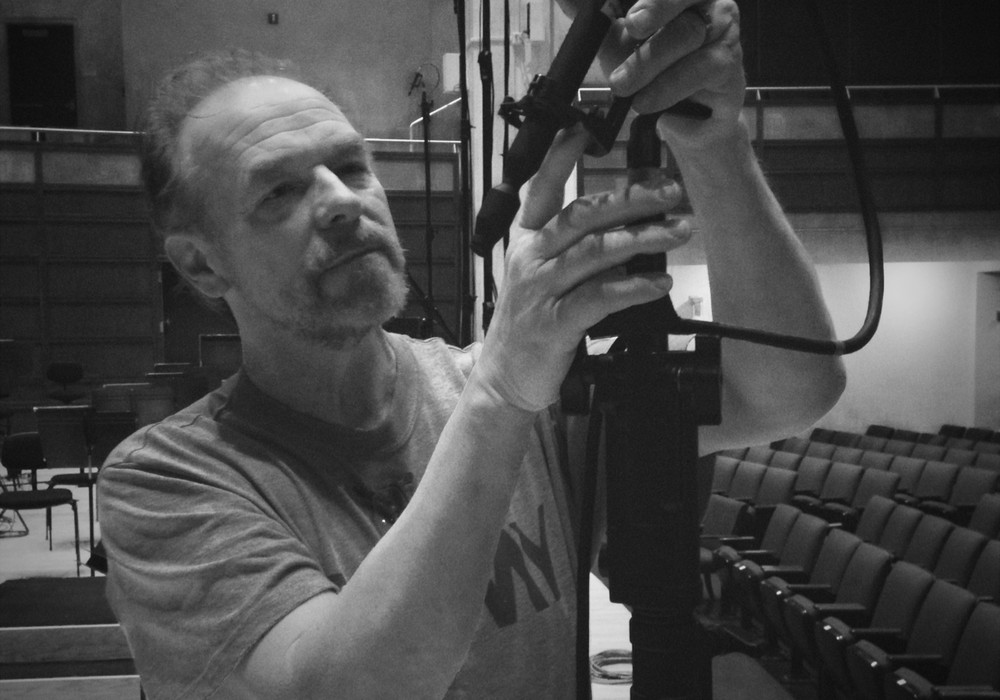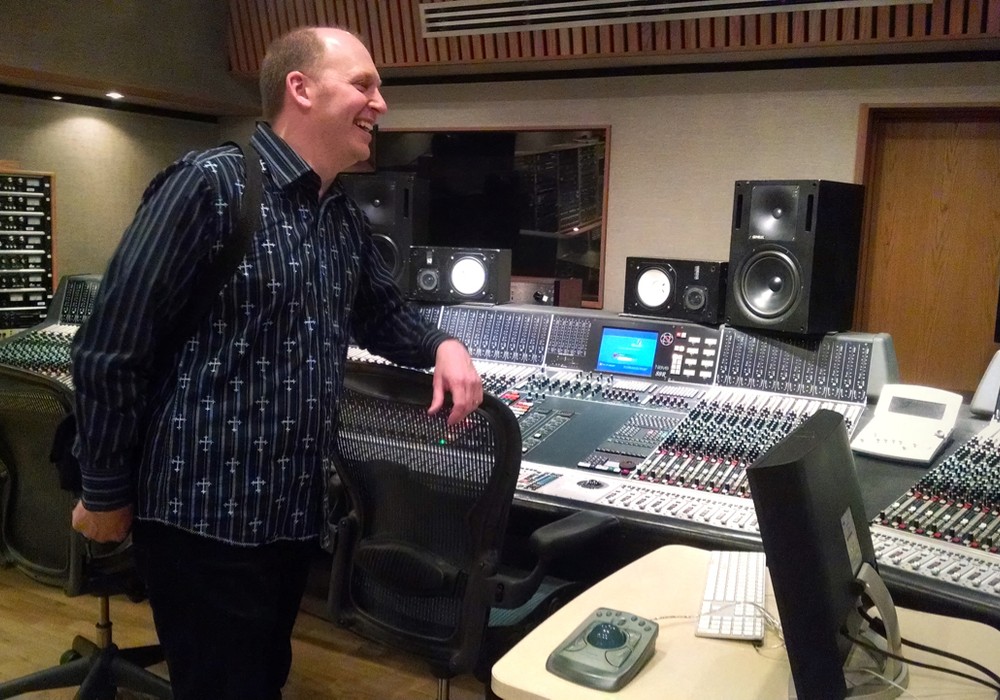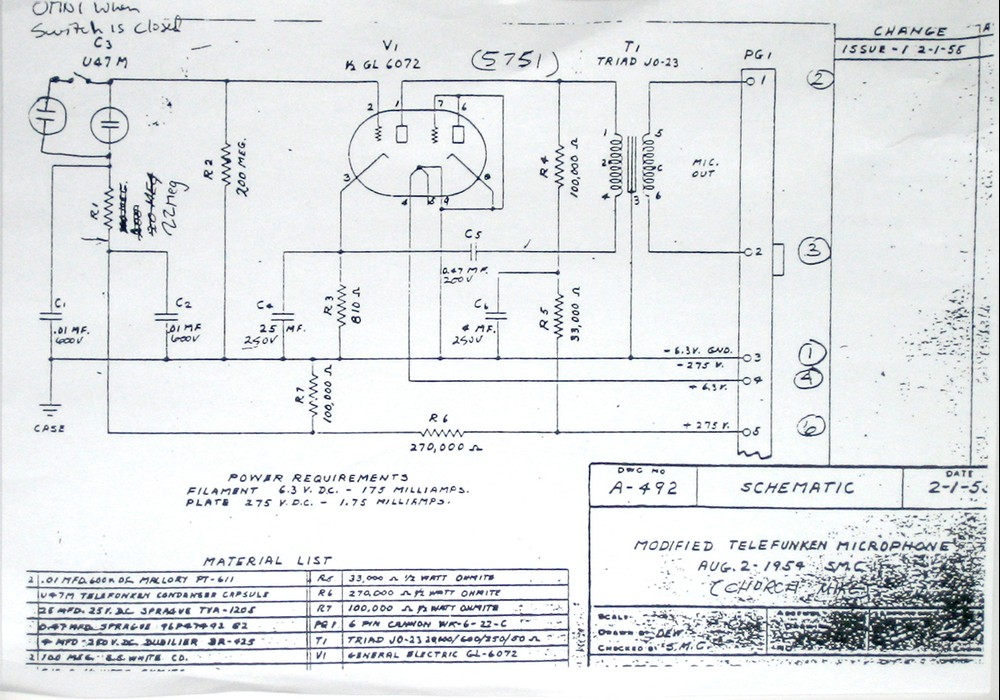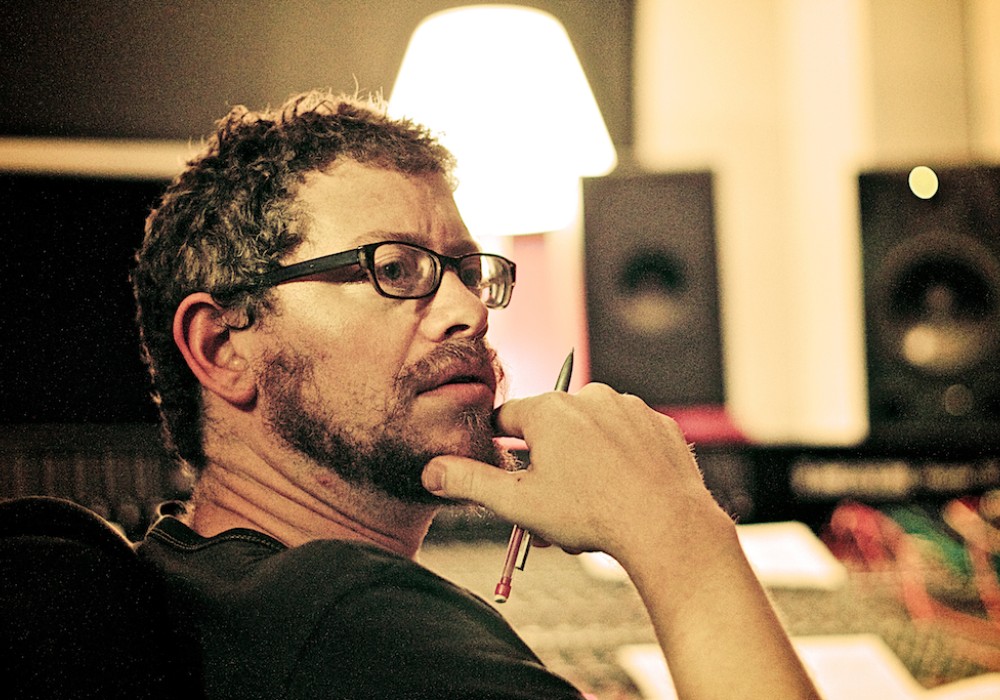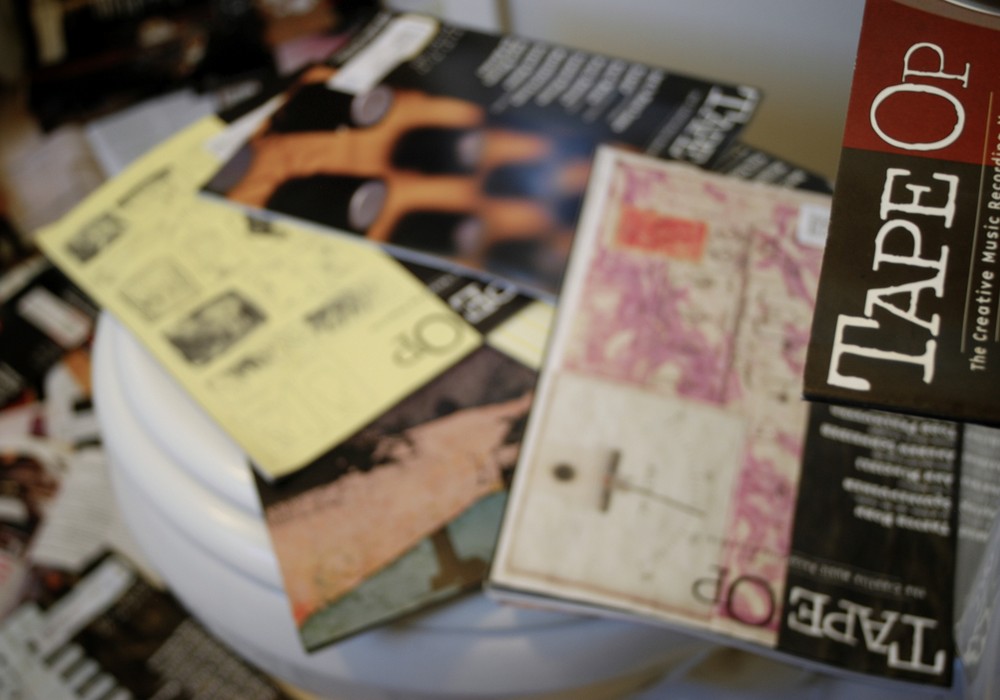Shelly Yakus is one of the true legends of the engineering trade, and his storied career demonstrates the value of an early start. You might even say he was born to record. His father and uncle were co-owners of Ace Recording in Boston, and young Shelly was a studio "rugrat" as far back as he can remember. As a young man, dazzled by the excitement of the New York studio scene in 1967, Yakus applied for a job as an assistant at Phil Ramone's fabled A&R Recording. After cutting his teeth on sessions by The Band (Music from Big Pink) and Van Morrison (Moondance), Yakus moved on to another staff position at The Record Plant. There he recorded and/or mixed records for everybody from John Lennon (Walls and Bridges) to Patti Smith ("Because the Night"), Blue Oyster Cult (Agents of Fortune), Alice Cooper (School's Out), and the Raspberries ("Go All the Way"), among many others. While still holding his staff job at Record Plant, he started freelancing with producer Jimmy Iovine, and one of their first efforts was Tom Petty's breakthrough album, Damn the Torpedoes.
After that, as a freelancer and later as chief engineer at A&M, Yakus logged credits on hits by Don Henley, U2, Lone Justice, and Bob Seger. This interview took place in August at Yakus' new recording home, Tongue and Groove Studios in downtown Philadelphia. Owned by vintage instrument and gear collector Michael Block and his partner Dave Johnson, Tongue and Groove is a place with the 1950's analog gear intertwines with the 21st century digital reality.
The State of Music Today
I was on a committee to pick the nominees for the best engineered record for the Grammy awards, and we had over 170 CDs to listen to, and out of them I only found five that really sounded different. But that didn't happen back then. I have to be careful about talking about, "Back in the day," because people say, "Well, that's old." Well, just because it's old doesn't mean it's wrong, and just because it was the original way or recording doesn't mean it doesn't have value today. You could hear the 160 that were done with Pro Tools — or overdone, with Pro Tools. Now, we have Pro Tools here, and an old API board, and we find that if we mix within Pro Tools and also split it out onto the API in a conventional way, and also sometimes recording on 2" and copying that into Pro Tools, it can work well. In fact, I'm in love with Pro Tools, and I thought I'd never say those words. But it's the combination of this thick analog sound going into Pro Tools that makes a very modern sounding record. But we're careful not to overuse it, to go too far. Still, I've also learned how to record female vocals into Pro Tools without going to tape first, even without outside converters. It doesn't sound pinched, it sounds full. So we're very careful with certain things about Pro Tools. But any of this digital stuff can sound pretty bad if you don't get the level structure right, if you don't get what's going into it right.
Learning to Listen
Everyone hears, but not everyone listens. One day I'm doing some tape copies for a client of my dad's, some 7-1/2" copies that are going to a radio station. They wanted fifty of them. I bring out the fifty, and my dad spot checked them. He had this little Wollensak machine, and I was sitting there — this was when I was about sixteen — and he takes tapes out to spot check them, plays a few, then on one he says, "Did you hear that?" I said, "No". He rewinds it, plays it again. Still didn't hear it. This went on for about ten minutes, but then finally he points his finger when it happens. Still didn't hear it. All of a sudden I hear this dropout, very subtle and minute, but it was there. It didn't go away, but just for a moment it dropped in volume. At that moment, it all changed for me. After that, I listened to everything. In that ten minutes, I went from a person who couldn't hear a dropout to one who did. It was the foundation of everything to come. Before that, I was hearing but I was not listening.
Don't Look, Listen
When I used to run a studio, I'd have the techs say to me, "You can't do that." And I said throw your books out and use your ears. Eventually they'd come around. They'd find out that if I don't look at what you're doing, and I don't look at the meters, but just listen to the speakers — hey, it sounds pretty good.
Perfect is Boring
Sometimes that's the whole trick, is hearing the difference between pretty good and great. Between lousy and good is easy, anybody can do that. But good and great can be a fine line, and it can be hard to distinguish if you're new at this. That's essentially what we're talking about here, the difference between good and great. And people say to me, "I want it perfect." But to me perfect is boring. We can try to make it great, but perfect is boring.
Routines
I always approach in the same way. Once I developed a sound that started to work for me, I found that when I started to freelance I could still use it in a room I had never worked in before. And that would get me a lot closer to the desired result in the fastest time. Because you're in a new room, with a new band and a producer you've never worked with before and some equipment you've never worked with before, you need a reference point. So if the mics and the way you have the room set up are totally different, you're fucked. So what I came with is a way of mic'ing drums and mic'ing guitars, and I know that if it doesn't sound right to me then there's something else going on out in the room, assuming all the other equipment is working right. Then I'll go out in the room and I usually hear what's wrong. And then once I get familiar with what I'm hearing, I can create variations on that because I have confidence in what I'm hearing.
The Band and Music From Big Pink
I saw things going on in that room I had never heard of. I think they had a lot of stuff made for them. The most remarkable sound was, on one song where Garth played what I remember was a Lowery organ, on a lot of the songs he had the signal from the organ, before it went to the Leslie, go through a telegraph key, and on the telegraph key you have a tension spring that you could adjust. He loosened the spring, and whacked this key, and it started bouncing up and down so it was making and breaking contact, and then started playing the intro to one of those songs. Can you imagine me standing in the studio, watching this key go up and down, hearing this sound coming out of his organ... well, I'd been in the studio since I was a kid and I was seeing shit go down that I'd never seen before. Remember, there were no racks of digital boxes back then, so people had to be very clever to come up with new sounds.
Raising the Drummer
Drum risers change the sound of drums a lot. It's very hard to find a good sounding drum riser but when you get one, the perspective of drums in the mix is totally different. It changes the way the drums sit in the mix. When they are not connected to the floor, it becomes a whole different animal. It's the same if you have a guitar amp on the floor. It couples with the floor, and the floor becomes and extension of the speaker, so you get all this low stuff that you have to roll off or filter out. The same thing happens with drums. They become part of the floor. You get more clarity with the riser, usually with even more bottom. In the final mix, the drums are in a place that is a better place than being on the floor. I've tried building risers at various times, using the heaviest lumber, but sometimes it just doesn't work well. They are hard to do.
Get it on Tape
When it went to 24-track, that's one reason [recordings] didn't sound as good. When you had to EQ something live off the floor... EQ'ing something twice, a little twice, is better than EQ'ing it a lot once, and much better than EQ'ing it a lot twice. Those equalizers, if you touch them just a little, get a gentle slope, it works. But if you crank it up, it gets harsh sounding. With 24-track, those decisions were left to later so they didn't get THE bass drum sound or THE snare sound. Then they'd EQ to try to fix it. One of the things they stopped doing with 16 and 24 was they stopped adding echo to the snare. But back then you had to put it on the track, because you were combining it with acoustic guitar and bass. So you had to get it right, a complete and finished drum sound. Well, when we went to 16-track, I continued to do that, to put echo on the snare, be it chamber or EMT. Nothing excessive, just a halo around the snare, something that would make the snare sound special. So when you got to the mix, you would have the snare separate but it would have a little chamber on it. So when you put another effect on that snare, you were putting it on an entire, complete sound. When you add your EQ and effects to that sound, it's totally different than taking it off a tape that is dry as a bone, maybe a little EQ. You won't get the same sound, and it's not as good a record. The problem is, producers were scared of this. I would tell them that I'm putting this echo on the track and they would say, "Oh no, don't, you can't do that!" And we would talk about it. I would express why I thought it was better, and some would allow me to do it. But most wouldn't. They would say, "Well, what if I want it dry in the mix?" I'd say, "When's the last time you've had a dry snare?" "Well, never, but what if I do?" I used to put tape delay right on the electric guitar. The producer would say, "What are you doing?" "Don't you like the sound of the guitar?" "Yeah, it's great, but don't put it on the tape." But I'd tell them that if you try to do it later, it won't be the same, it won't sound as good.
Get it Right the First Time
If you take the time to walk out into the room where the guys are playing, you are most of the way there. A lot of engineers never leave the chair in front of the console to go out and listen to what this band sounds like in this room, and then keep that in their head while recording and mixing. I've even had a producer come to me on occasion and say, "Shelly, can you come out here and listen? I'm looking for more of what's going on out here." Hearing it in the room and then trying to emulate that in the control room, you're a lot closer to where you want to be than if you never went out there. I know that every band has a unique personality, and the idea is to capture that personality. There are a lot of tricks to doing that. Some of the tricks are what we do with the guitar amps, how we place them in the room, what we do with the drums, how we tune them, the heads we use. It's not just one thing. It's the addition of many, many smaller ideas, as few tricks, and some luck.
"Whole Lotta Love"
I remember when Eddie Kramer first came in there [A&R], and he said, "Mate, if you could please just show me how to use the room. You don't have to hang around." I showed him around, then he puts on a tape and pulls up the faders and "Whole Lotta Love" comes out of the speakers, straight from the 8-track. It was amazing. In that day, the stuff that went to tape was huge sounding. For one thing, the boards all had transformers, which the modern boards don't have. People equate the modern boards with clarity and top end, but really many of them only have that at the expense of no real low end, or should I say a lacking in low end. Transformers, in my opinion, are the only way that you can capture what's going on out in the studio. You notice that a lot of people with modern boards are bringing in racks with Neve or API modules with transformers in them.
Even Sound
The evenness of a sound is one of the keys to a really good recording. For example, when you record a guitar, the tendency is for some of those frequencies to stick out. So when you get it into the mix, and there's only a small place in the mix for that guitar to fit into with all the other instruments... Well, you push the fader up and stop when it sounds loud enough. Well, the thing that is tricking your ear into thinking it is loud enough is those frequencies that are sticking out. Yet the body of the guitar is going to fall back into the mix, so you end up with a skinnier guitar sound. But if you get an even guitar sound to start with, when you push that fader up, it will go up higher and that guitar will appear to be bigger, because your ear isn't hearing these things sticking out like knives. You are moving this mass of a sound, so you have this whole guitar sound, top middle and bottom. It works no matter what you're listening on.
